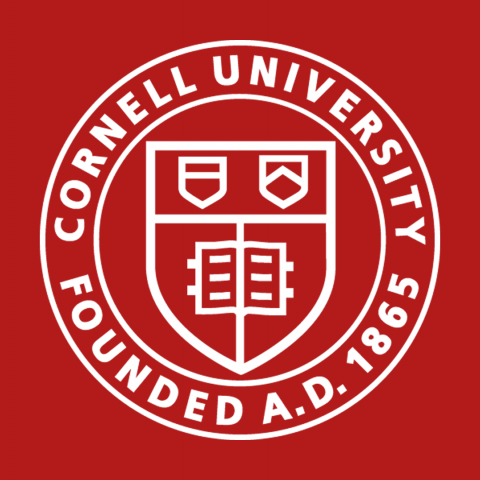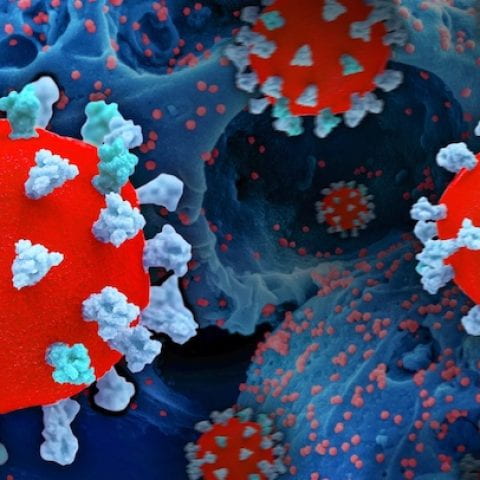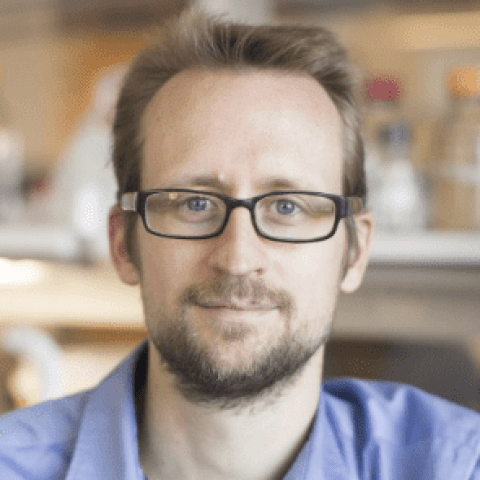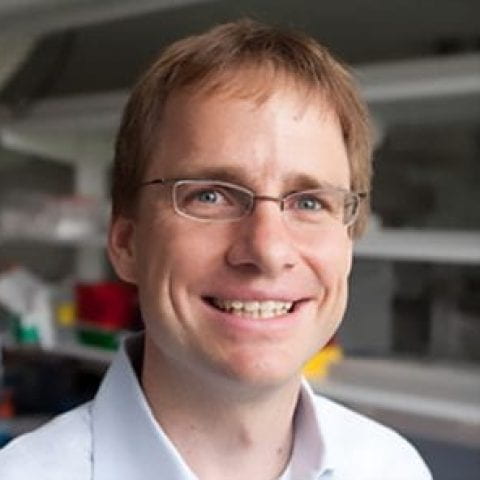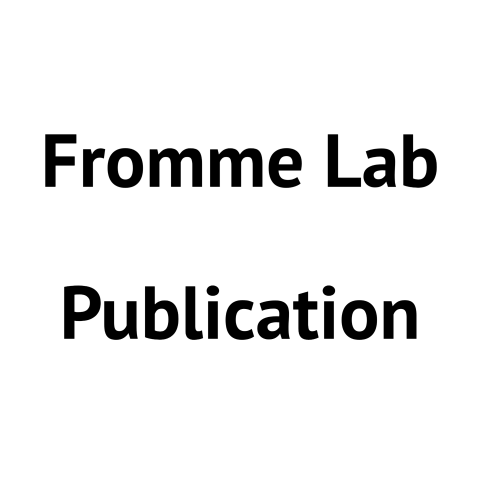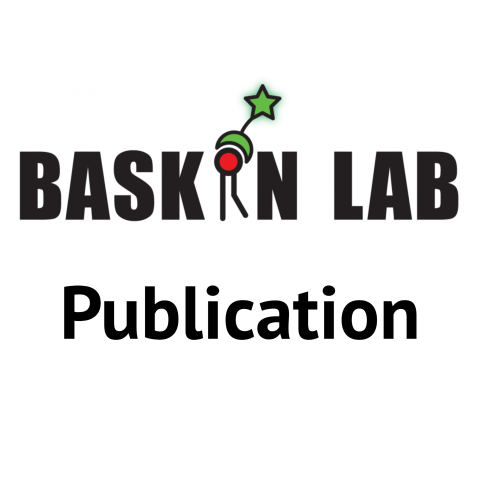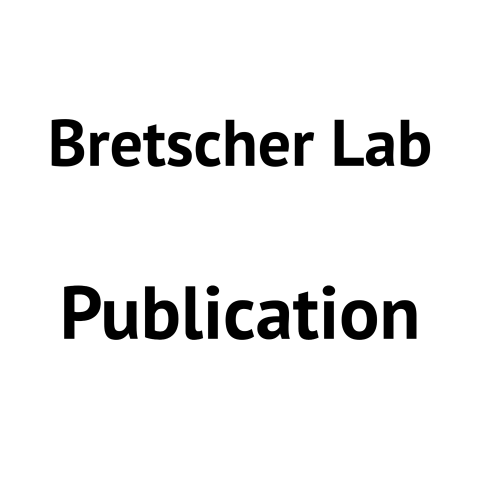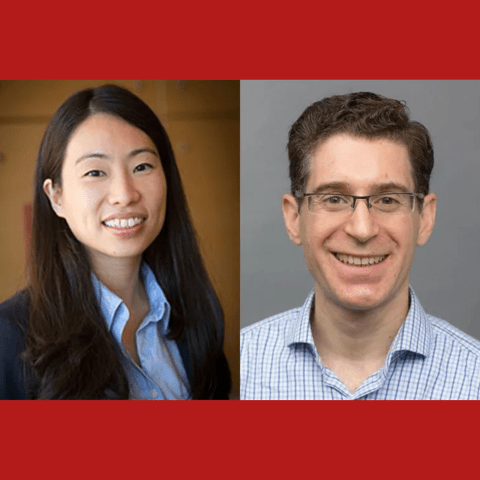News
William Comstock (Class of 2019) was awarded the Calvo TA Award for his role in the course BioMG 3320 at the MBG Awards Ceremony...
Roeder Lab graduate student, Byron Rusnak, highlighted by First Author Profile in Plant...
Saket Bagde is a doctoral candidate in biochemistry, molecular and cell biology from Nagpur, India. He earned his previous degrees at the Indian Institute of Science Education and Research Pune and University of Texas at El Paso and now studies the structure and function of complex molecular machines under the guidance of Chris Fromme at Cornell. What is your area of research and why is it important? The cells that make up living organisms contain countless moving parts that act as gears working to keep the cellular machinery functioning. Just as the shape of the gears in a car and how they fit with each other determines their function, the shape of the proteins determines their function. I study the structure and function of complex molecular machines. One of my projects is aimed at...
Saket Bagde, Fromme Lab graduate student, was awarded the annual Fred Hutchinson Cancer Center’s Harold M. Weintraub Graduate Student Award. This award recognizes exceptional achievement in graduate studies in the biological...
If anyone understands the importance of sunshine and fresh air, it is the Roeder Lab. Headed by Adrienne Roeder, an Associate Professor at the Weill Institute for Cell and Molecular Biology, and the Section of Plant Biology, School of Integrative Plant Science, the team studies the role that cell growth and division play in the diversity of cell size in the Arabidopsis, a flowering plant. Roeder’s group often enjoys outings together to areas on campus, especially to the arboretum, but occasionally visits other local parks and trails. “These breaks are very important because they give us a break from our routine, allowing us to connect with our fellow lab mates, with nature, and come back refreshed and revitalized,” says lab member Byron Rusnak. Venturing outdoors is a...
Graduate students Mauricio Paramo and Shagun Gupta, both researchers of the Yu Lab, led by Principal Investigator Haiyuan Yu, recently published a study revealing a comprehensive list of SARS-CoV-2-viral and human proteins that interact with each other in the pathobiology of COVID-19. These findings open doors to new research avenues for identifying potential treatments for the virus that can target protein-binding sites....
A newly discovered pathway relying on the production and modification of periplasmic oligosaccharides is required for proper cell-envelope homeostasis and antibiotic resistance in Gram-negative...
Drosophila has been a powerful model system for biological studies due to the wide range of genetic tools established for it. Among these tools, Gal4 is the most abundant, offering unparalleled tissue and developmental stage specificity for gene manipulation. In comparison, other genetic reagents are far fewer in choices. Here we present a genetic toolkit for converting Gal4 strains into LexA and Flippase transgenes through simple genetic crosses and fluorescence screening. We demonstrate the proof-of-principle by converting ten Gal4 lines that exhibit diverse tissue specificities and examined the activity patterns of the converted LexA and Flippase lines. Gal4-to-LexA and Flp conversion is fast and convenient and should greatly expand the choices of LexA and Flp for binary expression...
For nearly two decades, cellular responses to their environment—whether from chemical, molecular, or physical stimuli—have been well appreciated. These responses range from cell proliferation to differentiation, hypertrophy, migration, and even apoptosis.1–3 However, despite years of investigation, we are still learning how mechanical forces are first transmitted across the cell to sites of mechanotransduction, where they are transformed into biochemical signals, then propagated by signaling pathways, and finally translated into specific molecular processes that enable the cell to respond and adapt to the mechanical input. In particular, while it has long been hypothesized that extracellular forces transmitted to the nucleus via the cytoskeleton have the potential to alter the...
Rab GTPases are key regulators of membrane trafficking. When GTP-bound, or “active,” Rabs are anchored to membranes and recruit effector proteins that mediate vesicle formation, transport, and fusion. Rabs are inactivated by GTPase-activating proteins (Rab-GAPs), which catalyze GTP hydrolysis, rendering Rabs cytosolic. In vivo, C-terminal prenylation modifications link activated Rabs to organelle and vesicle membranes, yet historically, in vitro Rab-GAP activity assays have been performed in the absence of membranes. We have developed a method for assaying Rab-GAP activity in a physiological context, with dissociation of the Rab from the membrane serving as a readout for Rab-GAP activity. Given that membrane-binding status is a key consequence of Rab activation state, this assay...
Correct localization of Rab GTPases in cells is critical for proper function in membrane trafficking. Guanine-nucleotide exchange factors (GEFs) act as the primary determinants of Rab localization by activating and stabilizing their Rab substrates on specific organelle and vesicle membranes. The TRAPP complexes TRAPPII and TRAPPIII are two related GEFs that use the same catalytic site to activate distinct Rabs, Rab11 and Rab1, respectively. The Rab C-terminal hypervariable domain (HVD) is an important specificity determinant for the budding yeast TRAPP complexes, with the length of the HVD playing a critical role in counter-selection. Several recent studies have used cryo-EM to illuminate how the yeast and metazoan TRAPP complexes identify and activate their substrates. This review...
Pseudomonas aeruginosa is an opportunistic pathogen that is responsible for thousands of deaths every year in the United States. P. aeruginosa virulence factor production is mediated by quorum sensing, a mechanism of bacterial cell-cell communication that relies on the production and detection of signal molecules called autoinducers. In P. aeruginosa, the transcription factor receptor RhlR is activated by a RhlI-synthesized autoinducer. We recently showed that RhlR-dependent transcription is enhanced by a physical interaction with the enzyme PqsE via increased affinity of RhlR for promoter DNA. However, the molecular basis for complex formation and how complex formation enhanced RhlR transcriptional activity remained unclear. Here, we report the structure of ligand-bound RhlR in complex...
The specialized functions of eukaryotic organelles have motivated chemical approaches for their selective tagging and visualization. Here, we develop chemoenzymatic tools using metabolic labeling of abundant membrane lipids for selective visualization of organelle compartments. Synthetic choline analogues with three N-methyl substituents replaced with 2-azidoethyl and additional alkyl groups enabled the generation of corresponding derivatives of phosphatidylcholine (PC), a ubiquitous and abundant membrane phospholipid. Subsequent bioorthogonal tagging via the strain-promoted azide–alkyne cycloaddition (SPAAC) with a single cyclooctyne-fluorophore reagent enabled differential labeling of the endoplasmic reticulum, the Golgi complex, mitochondria, and lysosomes depending upon the...
Byron Rusnak is a doctoral student in plant biology from Villa Park, Illinois. He earned a B.S. in plant science from the University of Minnesota, Twin Cities and now studies the growth of sepals in flowers of the species Arabidopsis thaliana under the guidance of Adrienne...
Yingzheng (Jason) Wang and Misha Kazi, postdoctoral researchers at Cornell’s Weill Institute for Cell and Molecular Biology, have been named as recipients of the 2022 Sam and Nancy Fleming Research Fellowships. Since 2008, these prestigious 3-year fellowships have supported talented young researchers who are doing cutting-edge research in basic biomedical sciences and planning careers in biological or medical research. “The Fleming Fellowships provide exceptional young scientists the support, focus and freedom to pursue novel areas of study,” said Marcus Smolka, interim director of the Weill Institute for Cell and Molecular Biology and professor of molecular biology and genetics in the College of Agriculture and Life Sciences. “The 2022 recipients come highly recommended as...
Most of the components in the yeast secretory pathway have been studied, yet a high-resolution temporal timeline of their participation is lacking. Here, we define the order of acquisition, lifetime, and release of critical components involved in late secretion from the Golgi to the plasma membrane. Of particular interest is the timing of the many reported effectors of the secretory vesicle Rab protein Sec4, including the myosin-V Myo2, the exocyst complex, the lgl homolog Sro7, and the small yeast-specific protein Mso1. At the trans-Golgi network (TGN) Sec4’s GEF, Sec2, is recruited to Ypt31-positive compartments, quickly followed by Sec4 and Myo2 and vesicle formation. While transported to the bud tip, the entire exocyst complex, including Sec3, is assembled on to the vesicle. Before...
On Oct. 4, the 2022 Nobel Prize in Chemistry was awarded to Carolyn R. Bertozzi, Morten Meldal and K. Barry Sharpless for their work in the development of click chemistry and bioorthogonal chemistry, which will allow for improved medical treatments and diagnoses among various other applications. Prof. Jeremy Baskin, chemistry and chemical biology and Prof. Pamela Chang, microbiology and immunology, were PhD students in Carolyn Bertozzi’s lab and worked on the bioorthogonal chemistry research that contributed to the nobel...
Scott Emr, the Nancy M. and Samuel C. Fleming Professor of Molecular Biology and Genetics in the College of Arts and Sciences and former director of the Weill Institute for Cell and Molecular Biology, recently received a lifetime achievement award from the American Society for Biochemistry and Molecular Biology (ASBMB). Emr was honored for his discovery and characterization of the Endosomal Sorting Complexes Required for Transport (ESCRT) complexes — which function in diverse processes that are central to life, health and...
Membranes are multifunctional supramolecular assemblies that encapsulate our cells and the organelles within them. Glycerophospholipids are the most abundant component of membranes. They make up the majority of the lipid bilayer and play both structural and functional roles. Each organelle has a different phospholipid composition critical for its function that results from dynamic interplay and regulation of numerous lipid-metabolizing enzymes and lipid transporters. Because lipid structures and localizations are not directly genetically encoded, chemistry has much to offer to the world of lipid biology in the form of precision tools for visualizing lipid localization and abundance, manipulating lipid composition, and in general decoding the functions of lipids in cells. In this Account,...
A highly innovative method using the latest technology opens myriad new avenues for research, for understanding the biology behind COVID-19, and for identifying new treatments that target protein binding...

